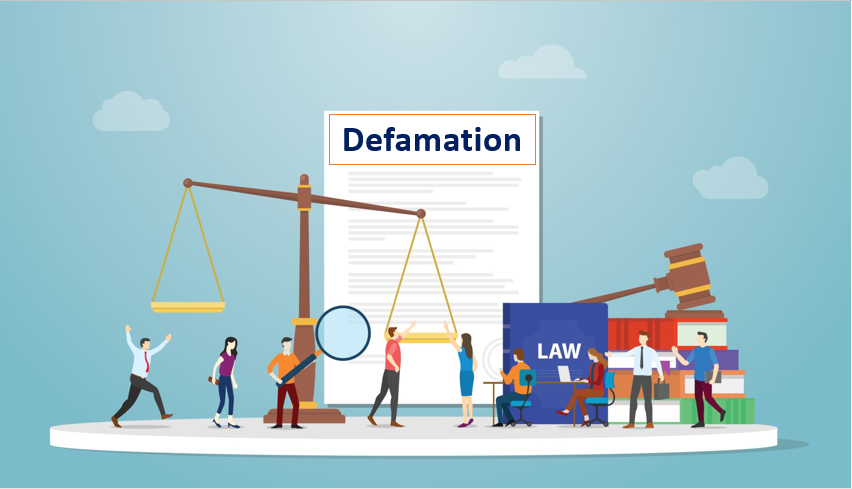Published on 9th April 2025
Authored By: Yashasvi Noniwal
Maharishi Markandeshwar (Deemed To Be University) Mullana-Ambala, Haryana
Introduction
The “insanity defense” is a strategy utilized in the criminal law of India to safeguard an individual charged with a crime from being held accountable. The defense is based on the idea that the accused was suffering from a mental illness at the time of the crime and was, therefore, incapable of understanding their actions. It is important to note that this is a legal term and simply having a mental illness is not sufficient to prove insanity. It is the responsibility of the accused to provide evidence that meets the standard of “preponderance of the evidence” in a civil case to signify insanity. The objective of this analysis is to examine the legal concept of insanity and how it has become a deadlock in the current judicial system.
“Actus Non Facit Reum Nisi Sit Rea” is a well-known principle that, taken literally, states that an act does not hold a person accountable if they do not have a guilty mentality. An essential component of committing a crime is the offender’s intention or guilty mind (Mens Rea). A person who is unable to comprehend the nature and consequences of his actions is protected by the defense of insanity.
Origins of insanity
The defense of insanity dates back to the early days of government, when it was acknowledged that punishing someone who is mentally ill is not appropriate. Hammurabi’s code, which was created around 1772 BC, is the earliest known instance of insanity as a defense.
People were not held accountable for their illegal acts when the Romans used the defense of insanity, which they believed to be non-compos mentis (without mastery of mind). This developed idea is known as “mens rea” in modern times.
The good and evil test was initially introduced in 1313 and was based on religious and biblical ideas.
Historical tests laid down
Certain tests laid down to determine insanity are:
- Good and evil test: The first test to determine insanity as a defence was laid down in the good and evil test, which was based on the beliefs of the Bible and religion. The test first appeared in 1313 in a case that was concerned with the capacity of a child below the age of The test held that like children below the age of 7 are incapable of knowing the nature of their act, the insane person was thought of as a child who is not capable of knowing the nature of the act or cannot distinguish “good from the evil”. The good and evil test was used from the 14th Century to the 16th century, but it was later abandoned.
- The Wild beast test: First appeared in the case of Rex v. Arnold[1], 1724, where the defendant was found guilty of shooting Lord Onslow after the latter enchanted him. The accused’s family members also stated in their testimony that he was experiencing delusions. The court decided that the defendant should be exonerated since he was insane and lacked the mental capacity to act like a “wild beast.” For a century, the test remained valid.
- The right and wrong test is the actual forerunner of the M’Naughten rule. It was established in the Regina v. Oxford case in 1840, where the jury determined that it was crucial to ascertain whether the prisoner was mentally ill at the time of the acts or whether he was suffering from a disease that prevented him from resisting the acts. Later in the year 1843, the M’Naughten case, (1843) led to the landmark case of determining the insanity of an accused in the court of law.
Section 84 of the IPC/ Section 22 of the BNS
Section 84 of the IPC/Section 22 of the BNS provides the statutory framework for the defense of insanity. According to this section, nothing is an offense which is done by a person who, at the time of doing it, by reason of unsoundness of mind, is incapable of knowing the nature of the act, or that he is doing what is either wrong or contrary to law. This section emphasizes the importance of considering the accused’s mental state at the time of the offense.
It is a legal concept, not a clinical one (medical one). This means that just suffering from a mental disorder is not sufficient to prove insanity.
The defendant has the burden of proving the defense of insanity by a preponderance of the evidence which is similar to a civil case. It is hard to determine legal insanity, and even harder to successfully defend it in court.
In order to hold a person legally responsible for a crime, criminal intention is necessary.
A person may lack sufficient mental capacity to form a criminal intent because of some detect of mental faculty.
Therefore, those who are under a natural disability of distinguishing between good and evil, as infants under the age of discretion, idiots and lunatics, are not punishable by any criminal prosecution.
Stephen in his Digest of Criminal Law state – “no act is crime if the person who does it, is at the time of same time when it is done prevented either by defective mental power or by the same time affecting his mind
- from knowing the nature and quality of the act, or
- from knowing that the act is wrong.”
Ingredients
- Act must be done by a person of unsound mind.
- Such person must be incapable of knowing :-
- the nature of the act, or
- that the act was contrary to law, or
- that the act was wrong.
- Such incapacity must be by reason of unsoundness of mind of the offender.
The section lays down the legal test of responsibility in cases of alleged unsoundness of mind.
The accused is protected not only when ,on account of insanity, he was incapable of knowing the nature of the act but also when he did not know either that the act was wrong or that was contrary to law, although he might be knowing the nature of the act itself.
There are 4 kinds of person who may be said to be Non Compos Mentis(Not of Sound Mind):-
- An idiot – An idiot is one who is of non sane memory by his birth, by a perpetual infirmity, without intervals.
- One made Non Compos by illness – Such person is excused on criminal cases from such acts as are committed while under the influence of his/her disorder.
- A lunatic or a madman – A lunatic is one who is afflicted by mental disorder only at certain periods and while madness is permanent.
Lunacy and Madness are spoken of as acquired insanity, and idiocy as natural insanity.
- One who is drunk – As to persons who are drunk and are in the state of intoxication at the time of doing the act.
Unsoundness of mind whether the want of capacity is temporary or permanent, natural or supervening, whether it arises from disease or exists from the time of birth, it is included in this expression.
Types of Tests
- Wild Beast Test: A person can demand immunity if, due to his unsoundness of mind, he was incapable of distinguishing between good & evil and did not know the nature of the act committed by him.
- Insane Delusion Test: According to Erskine, a fixed crazy delusion is what determines insanity, and the defendant’s actions were motivated primarily by this delusion. The “Insane Delusion Test” was the name of this examination.
Judicial Trends
Recent Indian court cases have caught up with the concept of insanity. In State of Maharashtra v. Sai Reddy (2013)[2], the Bombay High Court held that the McNaughten Rule is still relevant in Indian law, but it should be applied in a more nuanced and flexible manner. In Ravinder Kumar v. State (2014)[3], the Delhi High Court emphasized the importance of considering the accused’s mental state at the time of the offense, rather than relying solely on medical opinions.
- M’ Naghten’s Case[4]
In this case, every man is to be presumed to be sane and to posses a sufficient degree of reason to be responsible of his crime, until the contrary is proved to their satisfaction and to establish a defence on the ground of insanity it must be clearly proved that, at the time of committing the act, the accused was labouring under such a defect of reason, from disease of the mind, as not to know the nature and quality of the act he was doing.
Principles laid down in M’Naghten’s Case
- Every man shall be presumed to be sane.
- To claim this exception, the accused should prove that he never thought his act to be wrong or contrary to law.
- To plead the defence of insanity, the accused must show that he did not know the nature of the act at the time of committing that offensive act.
Whenever a person under insane delusion (false brief) thinks that other person is in the act of causing his death and kills that other person can also claim the benefit of insanity.
- Ashiruddin Ahmad’s Case[5]
In the case, where the accused on being commanded in his/her dream by someone in paradise to sacrifice his/her own son took his 5 year old child to a mosque and killed him thereby thrusting a knife in the child’s throat and thereafter went straight to his uncle and told him as to what he had done.
It was held that the accused was still entitled to the benefit of Section 84 of IPC, as even though he knew the nature of the act he did not know that it was wrong.
- Ratan Lal Vs State of MP, 1971[6]
The appellant was caught setting fire to the grass in an open land of Nemichand, when he was asked why he did it, he replied; ‘ I burnt it, do whatever you want’ the appellant was charged under Section 435 ( mischief by fire with intent to cause damage) of the Indian Penal Code. According to the psychiatrist, he was a lunatic in terms of Indian Lunacy Act, 1912. The report explicitly stated that accused is :
- Remains depressed
- Does not speak,
- He is a case of lunatic depression and psychosis, and
- He requires therapy.
The trial court held that the accused was not liable to be punished. An appeal was filed by the state, and the High Court reversed the findings of the trial and held the accused liable for the offence. Afterward the Supreme Court allowed the appeal, and the conviction was set aside based upon two measure factors:
- Medical evidence provided and,
- According to the behaviour of the accuse on the day of the occurrence.
These factors indicated that the accused was insane within the meaning of section 84, IPC.
Conclusion
The concept of insanity in Indian criminal law is complex and multifaceted. As our understanding of mental illness and its relationship to criminal behavior continues to evolve, it is essential that the laws and judicial approaches adapt to ensure justice and fairness for all. This article has provided a comprehensive analysis of the concept of insanity in Indian criminal law, highlighting the complexities and challenges associated with this defense.
It is suggested that there should be w well-defined definition of the term ‘mental insanity’ to avoid the various controversies and confusions that arise in understanding and differentiating between the ‘mental disease’ and the actual insanity of mind sought by the Code or the so-called ‘legal insanity’ in order to make the defense available to the accused.
Section 84 of the Indian Penal Code should be amended to incorporate the partial defence of diminished responsibility on murdering insane persons. This change shall be made on an equal footing with the defence of diminished responsibility as accepted under the defence of insanity as specified by English Criminal Law.
The scope of section 84 should be expected to incorporate the defence of automatic under the defence of an unhealthy mind, just as it is recognized by the English criminal law system.
Bibliography
- Paranjape, P. N. (2017). Criminology and Penology (Including Victimology). Allahabad: Central Law Publications.
- Indian Penal Code, 1860.
- Bharatiya Nyaya Sanhita, 2023.
- Indian Lunacy Act, 1912.
References
[1] Rex v. Arnold (1724) 16 How. St. Tr. 765.
[2] (2013) 7 SCC 452.
[3] 2014
[4] (1843) 8 ER 718.
[5] Ashiruddin Ahmad v. King (1949) AIR Cal 514.
[6] Ratan Lal Vs State of MP (1971) AIR 778.


